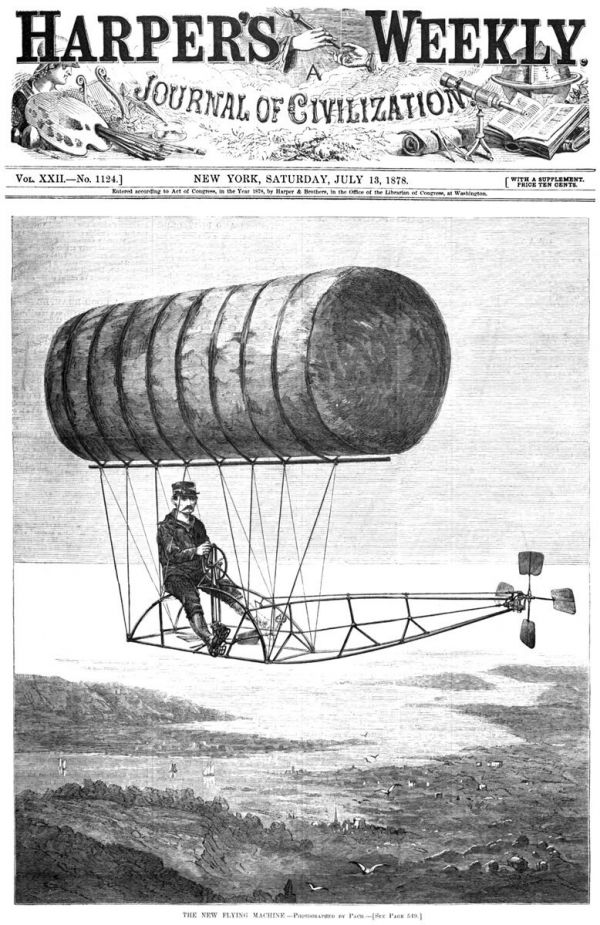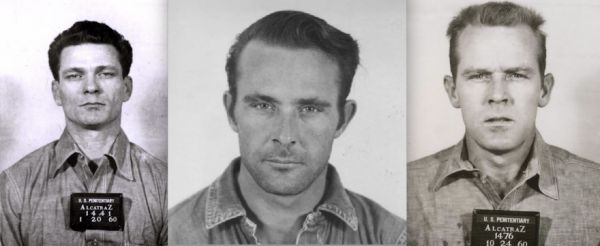In the early 1950s, French soldiers fighting the Viet Minh in French Indochina called in a battlefield casualty. The military sent in a helicopter, an insect-like contraption the soldiers had never seen before. When it landed, they saw the pilot was a woman! It was just another chapter in the amazing life of Valérie André.
André had two passions from a young age. She wanted to fly, and she wanted to become a doctor. She learned to pilot an airplane, although she had to pay for her lessons, unlike boys. Her education was interrupted by World War II, but when she got her medical degree in 1947, she joined the military and spent five years doing surgery in Indochina before becoming a helicopter rescue pilot. In the meantime, she volunteered to parachute into dangerous territory to bring medical help to both soldiers and locals. That's how she got the nickname "the woman who came from the sky."
André flew 127 rescue missions in Vietnam, then moved on to serve in Algeria. She was the first woman to achieve the rank of brigadier general in the French Army before she retired. And this spring, she turned 102 years old! Read about the amazing medical and aviation career of Valérie André at Military History. -via Strange Company
The internet's two favorite things, cats and Star Wars, have been combined in myriad videos, many that you've seen here, and we won't pass up the opportunity to post more of them. Instagram cats Badger and Ellie, along with their friends Lucy, Ziggy, Bo, Usopp, Luke, Linus, Tamari, and Teddy, are fashionistas with a costume for any and every event. Now they are actors, too, as they recreate the original 1977 movie Star Wars, now known as Star Wars Episode IV: A New Hope. Oh yeah, and The Empire Strikes Back and Return of the Jedi as well. They have their lines down purr-fectly. I wonder what kind of fish paste they've been eating, because it's obviously lip-smacking good. Chewbacca has especially emotive dialogue. Don't miss Yoda observing in amazement as Luke raises his X-wing fighter using the Force ...and some fishing line. These are all good cats. (via Boing Boing)

The Inspiration4 space launch in 2021 conducted by the private space travel firm SpaceX carried four humans into Earth orbit. The astronauts stayed for two days before they safely splashed into the Atlantic Ocean.
The New York Times reports that the crew performed medical and cognitive tests. One of them was a test of attention span. The astronauts stared at a box displayed on an iPad. When a stopwatch icon appeared on the screen, they pressed the icon. The program assessed how long it took for them to press the button and therefore how long they were paying attention to the game.
The results of the study revealed significantly decreased attention span while in space.
-via Dave Barry, who blasphemes "Exhibit A: Star Trek" | Image: Paramount
Henry Worsley, inspired by his ancestor Frank Worsley, who was captain of Ernest Shackleton's ship Endurance, went to Antarctica to hike across the continent. It wasn't Worsley's only Antarctic adventure. He first recreated Shackleton's 1907-09 Nimrod Expedition, when he came close to the South Pole, then Roald Amundsen's successful expedition to the South Pole. In 2015, Worsley's goal was to hike across Antarctica solo, without any vehicle and with no airdropped supplies. But before we get to this difficult expedition, Weird History gives us the short version of the entire history of Antarctic exploration. About half way through, we get into Henry Worsley and his solo hike. It did not turn out well.
This solo feat only became plausible once the road, or maybe it's better called a path, from McMurdo to the South Pole was completed in 2007. Since Worsley's attempt, both Colin O'Brady and Louis Rudd completed the same route alone on skis in 2018.

What do you see in this image? It appears to be a mishmash of overlapping or intertwining circles, or maybe even a spiral of some kind. But when you try to follow those circles individually, you'll find that there are four concentric circles that do not overlap at all!
This is called Pinna’s Intertwining Illusion. The reason you see intertwining circles, or a spiral of some sort, is due to the orientation of the squares, which varies from circle to circle. The squares are uniformly close together, but because they are squares, they appear more angular in the smallest circle. The overall effect makes our brains see overlapping circles. It's like if you took a Twist-O-Flex watchband and tried to roll it up tight until the links separate enough to pinch you, which is the only example I could find within reach at my desk. In other words, we are squaring the circle.
This illusion was discovered by by psychology professor Baingio Pinna. He has conducted research into the brain's processing of illusions displaying the rotating motion effect. That sounds like illusions that will make you woozy, and they do. -via TYWKIWDBI
(Image credit: Jochen Burghardt)
It's been years since we've seen a new animation from the folks at Birdbox Studio (previously at Neatorama), and this one is a delight. A mountain climber puts all his effort into reaching the summit, but when he gets there, it's already occupied. By a sheep. Now, sheep can be dumb or stubborn or both, but you'll have to watch the rest of this cartoon to know which one this sheep really is. Oh yeah, you can say the same thing about the mountain climber. The climber is determined to stand on the summit himself (and no doubt get a picture for social media), but the sheep keeps him inches away from his goal. The story seems like it is some kind of analogy for setting goals in life or something, but the real point is to make us laugh. So go ahead and laugh, and if you can think of a analogous proverb, leave a comment. -via the Awesomer
Many people have a vision of life in the 1950s that can be kind of comforting for them. Americans lived in the suburbs as middle class nuclear families with a stay-at-home mom, enjoying postwar prosperity in the company of many other housewives and neighborhood children, a vision that lasted until the mid-'60s. But that was on television. It was in the '50s that people began buying TV sets and watching television regularly, and those sparkling clean (and white) shows began to be recorded so that they can still be seen today. In the '70s, we even got a sitcom that played off the stereotype of the idealized 1950s, although that particular joke is almost lost today.
The idealized sitcom family isn't the only misconception that people today have of the 1950s. Read up on the interstate highway system, the McCarthy hearings, the Korean War, Jell-o recipes, and more in a list of ten misconceptions about the 1950s at Mental Floss. Or you can listen to the list in video form.

There are people who assumed that tennis balls were always yellow. There are also people who look at tennis balls and think they are green, but that's a whole other story. The color of tennis balls is officially "optic yellow," but up until 1972, they were white, or occasionally black.
In the 1960s, color television was starting to really take off, and the head of BBC Two, David Attenborough, was keen on color, and arranged for the 1967 Wimbledon tournament to be broadcast in color. Attenborough was pleased with the broadcast, but noticed that it was hard to follow the ball, especially when it was close to the white court lines. Something had to be done, like making the balls yellow. In 1972, the International Tennis Federation commissioned a study in visibility, and thereafter decreed that tennis balls were to be either white or yellow. Televised tournaments adopted yellow balls immediately, with one exception- Wimbledon. That ultra-traditional tournament resisted the change until 1986!
Today, tennis balls come in all colors, but if you are going to compete professionally, or on television, the balls will be optic yellow. -via Kottke
(Image credit: Babolat)
Since 1982, people have admired the drawing by the late Patrick Nagel that graced the cover of the Duran Duran album Rio. But who was the model that inspired it? The mystery has been solved 42 years later. And the model didn't even realize it herself! The photograph Nagel used was from a 1981 issue of Vogue Paris. Model Marcie Hunt was the subject, and she retired from modeling never knowing that her image was the one on the album cover.
Instagram user nagel_angel, who runs a fan account about the artist, explained in a post how they found the source image for the artwork. When they finally found the photo, the photographer, hairstylist, and everyone involved was credited- except for the model! Further sleuthing revealed her name.
Marci Hunt was surprised to be identified, and revealed that she always loved Duran Duran's music, and even danced to "Rio" at her wedding 31 years ago. She still has that cherry ice cream smile. -via Metafilter

The Wright brothers are credited with the first airplane, but technically they made the first heavier-then-air powered and controllable flight. In an airplane. People had been flying for more than a century before that, in hot air or gas balloons, which are lighter than air. The problem with balloons was that the air itself guided them, and you never knew where you were going to land. Then came Charles Ritchel, an eccentric tinkerer who had more than 150 patents for all kinds of things. In 1878, he unveiled a flying machine that could be controlled by the pilot.
It was a balloon of sorts, a scary-looking contraption with a 25-foot gas bag over a carriage that resembled a boat. The pilot propelled the ship with a hand crank that powered a propellor, and his feet guided fins that changed direction. Ritchel couldn't pilot it himself, because he was too heavy, but he found Mark Quinlan, a brave man who only weighed 96 pounds. At its first demonstration, the dirigible ascended, flew around, and came back to the launching spot! That was a breakthrough in ballooning. However, Ritchel's design is barely mentioned in the history of aircraft, since it could never repeat that feat. Besides, who wants to spend their time in the air cranking a propellor by hand? Read about Charles Ritchel and his forgotten dirigible at Smithsonian.
Thirty years ago or so, the world went crazy for giant pandas. They were designated as an endangered species in 1990, and suddenly everyone wanted to save the giant panda, or at least see one before they were gone. Eventually, some folks started wondering if giant pandas were really worth all the trouble. Who ever heard of a bear that's a picky eater? They didn't even reproduce well, or so we thought. They look unnatural and couldn't hide anywhere with that coloring. Giant pandas began to be seen as cute, but lazy and useless. But is that a reason to not save a species? SciShow rises to the occasion and tells us how pandas are actually pretty good at what they do. It's our fault that their environmental niche is diminishing, so they probably see us as evil and useless and not worth saving. This video has a 70-second skippable ad at 2:42.
So you just measure the height, display it in the cab and you are sorted?
— Tom (@thelorryist) May 4, 2024
Well no actually. You'll notice I have talked mostly in metric so far, and if you were born in the UK in the last 45 years so will you.
But have you noticed that a lot of bridges display imperial units? pic.twitter.com/SDstHdNfkD
In the UK, an average of five bridges are hit by trucks every day. That rises to an average of eight in the winter (and the UK is much smaller than the US). The law says all trucks must have their clearance height labeled on the dashboard, and that is the responsibility of the driver. It turns out that drivers often assume too much in their measurements. And then there is a problem with two measuring systems. By law, bridge heights are labeled in imperial units! This, despite the fact that most truck drivers in the UK have always used the metric system. Yes, many signs use both units, but not all of them. And the signs can be confusing to drivers. There are more reasons, some having to do with Brexit, cargo weights, road resurfacing, poor planning, and truck equipment. Tom, @thelorryist, is a truck driver who explains all this to us in a Twitter thread which is easier to read at Thread Reader. -via Metafilter

The Associated Press reports that a mixed human/canine family recently camped in the wooded mountains of Baker County, Oregon. One of the men was driving along a nearby road when his truck crashed and rolled down into a steep ravine. Four dogs were inside the truck, one of whom walked four miles to the campsite to alert his packmates of the accident. What a good boy!
In an authentic Lassie moment, he led the family to site of the crash. US Forest Service rescue workers then extracted the man from the scene using a complex rope system, photos of which you can see here. He was airlifted to the hospital. The man and all four dogs survived the accident.
Photo: Baker County Sheriff's Office
Every May in Gloucester, UK, people gather at Cooper's Hill to chase a seven-pound wheel of cheese down the very steep slope. It's less a race than an experiment in energetic falling, and there are always injuries of some sort. The first person to the bottom wins the cheese, although they've given up on letting everyone do it at once, and the women's division is now separate. We've covered the Cheese Rolling a few times, but now we get to see the 2024 race in a new way. Dan Gruchy and Gavin Free, the Slow Mo Guys (previously at Neatorama), were there to capture the mayhem on their high-speed camera in order to show us the race in slow motion.
If you're in a hurry, the race heats start at about two minutes in. After several heats, we get the glorious high-definition slow-motion footage of the carnage at about 5:45, which results in perfectly clear stills of uncontrolled bodies flying every which way. Ouch. -via Laughing Squid

The 1979 Clint Eastwood film Escape from Alcatraz was a true story, to a point. In 1962, three inmates, Frank Lee Morris, John Anglin, and Clarence Anglin, escaped after spending more than a year cutting through the concrete of their cells with homemade power tools, setting up a workshop in an empty space above them, building an inflatable raft, and using homemade dummies to cover their absence. A fourth prisoner, Allen West, was part of the plan but did not make it out of his cell in time to join the escape.
It was an audacious plan, and could have failed in many places. But Alcatraz Federal Penitentiary was mainly considered inescapable because of its location in San Francisco Bay, with its unceasing winds, strong currents, cold temperature, and rocky shores. A manhunt was launched as soon as the escape was discovered. Some of the escapees' equipment and possessions were found, yet no bodies were ever recovered. The prison was shut down a year later, and the FBI kept the case open until 1979, when the three men were finally declared dead. But were they? A 2018 letter supposedly from John Anglin gives a few scant details, and the US Marshals Service has the case still open. Read the real story of the 1962 escape from Acatraz at BBC Culture. -via Damn Interesting
(Images source: Wikipedia)




